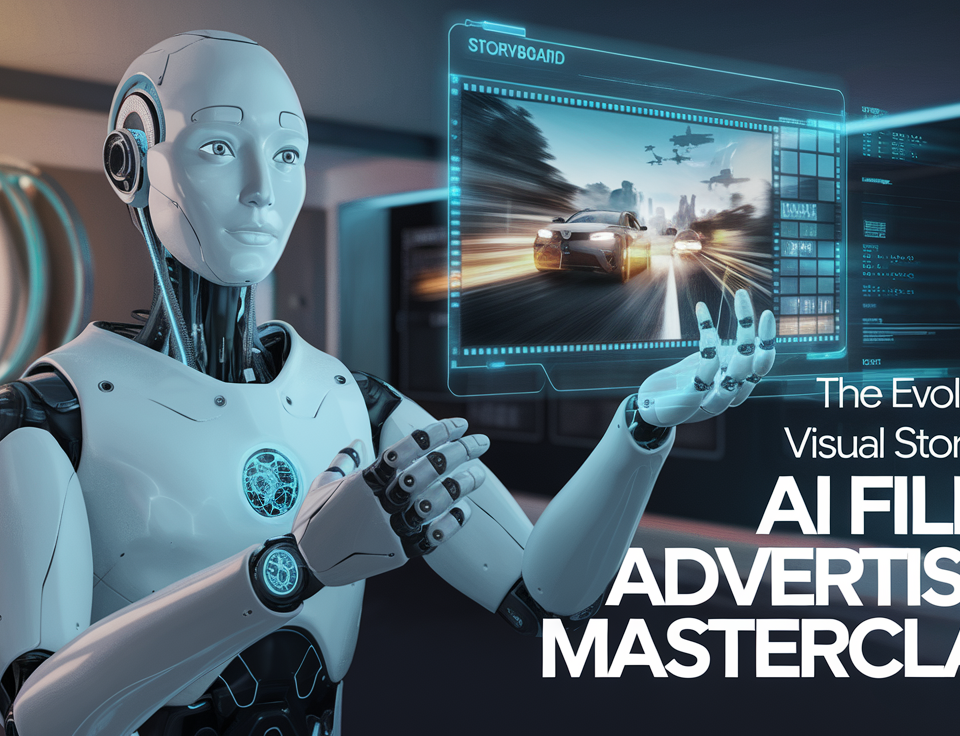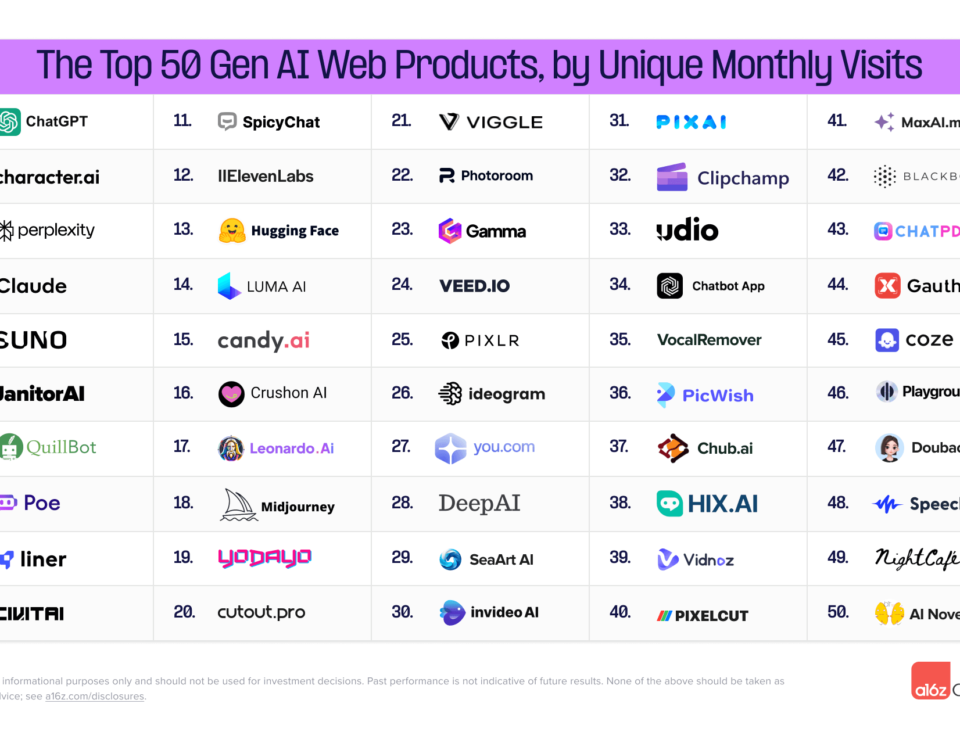
AI Snapshot: Key Trends Sept 11
September 10, 2024
The Best AI Tools for Filmmaking and Advertising
September 23, 2024In an interview, Aravind Srinivas, CEO of Perplexity AI, discusses the company’s founding, growth, and future vision. Perplexity, co-founded in 2022, integrates AI and real-time web data to provide accurate answers to user queries, differentiating itself from traditional search engines like Google. While Google relies on advertising revenue from clicks, Perplexity offers direct answers with sources and citations. Srinivas explains how Perplexity balances speed and accuracy, aiming to serve millions of users with a self-reliant infrastructure. He also highlights Perplexity’s collaboration with content publishers, and its plans to explore revenue models like subscriptions and ads.
In a rapidly evolving digital landscape, where AI and search engines intersect, Perplexity is paving the way for a new paradigm in search technology. Founded in August 2022 by four co-founders, including CEO Aravind Srinivas, Perplexity aims to revolutionize the traditional concept of search engines by integrating cutting-edge AI models and real-time web data retrieval. In this interview, Srinivas shares the story of Perplexity’s rapid growth, how it differentiates itself from giants like Google, and what the future holds for the company.
Interviewer: Thank you for joining us. Could you start by briefly introducing Perplexity?
Aravind Srinivas: Sure, Perplexity was co-founded by four people—myself as CEO, Dennis as CTO, Johnny Ho as Chief Strategy Officer, and Andy as President. The company began in August 2022, so it’s been about two years now. We’re essentially a group of people interested in combining AI and search. Since search is one of the most widespread and impactful types of software, we decided to work on this problem and reimagine it using modern, generative AI.
Interviewer: Could you tell us more about the background of Perplexity’s founding?
Aravind Srinivas: It’s an interesting story. Dennis and I knew each other during our PhD days. I did my PhD in AI at UC Berkeley, and Dennis did his at New York University. We worked on the same research ideas but from different universities, just a day apart. That’s how we met. Dennis later came to my lab as a visiting student, and we kept in touch. At the time, we didn’t talk about starting a company, but we discussed many ideas. Eventually, I reached out to him, and together we founded Perplexity. Dennis also brought in Johnny, and Andy initially joined as an investor but later became our President after seeing the fast pace at which we were shipping products.
Interviewer: Did you expect this level of success so quickly?
Aravind Srinivas: Not at all. We started with very low expectations. Our initial goal was simply to build something useful for 100 people. But as the product became more functional and helpful, our ambitions grew. We reached 100 users, then 10,000, then 100,000, and when we hit a million users, we realized this was really turning into something big. That’s when we decided to turn it into a real company, hiring more people and raising venture capital to build infrastructure that could scale.
Interviewer: How did ChatGPT’s launch influence Perplexity?
Aravind Srinivas: We were actually developing Perplexity before ChatGPT was released. We had a version of Perplexity as a Slack bot around October 2022, and ChatGPT was released in late November of that year. While ChatGPT was a huge moment for AI, it didn’t directly affect our development timeline. However, its release motivated us to launch Perplexity a bit earlier. We went live on December 7, 2022, just a week after ChatGPT.
Interviewer: What sets Perplexity apart from ChatGPT and other AI models?
Aravind Srinivas: The key difference isn’t just in the AI model itself but in how we use real-time web data. Perplexity not only relies on AI models but also pulls search results from the web and uses them to answer questions. Every answer we provide is backed by sources and citations, which help ensure the accuracy of our responses. Additionally, Perplexity doesn’t have a knowledge cutoff, meaning it can always pull real-time information, making it ideal for fact-based questions, real-time news, and accuracy-focused tasks.
Interviewer: How does Perplexity generate answers?
Aravind Srinivas: When you ask a question on Perplexity, the first step is to retrieve relevant links from the web. We then extract relevant paragraphs from those links and ask the AI to summarize the information and generate an answer. Every sentence we generate is backed by sources, ensuring that the answer is grounded in real-world data. This approach is different from ChatGPT, which generates answers solely based on its internal AI model without referencing external data.
Interviewer: How do you balance speed and accuracy in Perplexity’s responses?
Aravind Srinivas: Perplexity manages to strike a balance between speed and accuracy. We do more behind-the-scenes work per query than ChatGPT, such as pulling real-time search results. Despite this, we are able to provide fast and accurate answers. Our magic lies in ensuring that users receive both speed and accuracy simultaneously, which is a very difficult balance to achieve.
Interviewer: What is Perplexity’s long-term vision?
Aravind Srinivas: We aim to grow Perplexity to serve hundreds of millions of users while maintaining high levels of accuracy and speed. We are continuously working on building a more self-reliant infrastructure. As the AI models we use become more cost-effective, we’re planning for massive user growth, potentially 100 times larger than where we are today.
Interviewer: How does Perplexity differ from Google, and why can’t Google offer something similar?
Aravind Srinivas: Google is very good at traditional search and has strong AI models like Gemini. However, Google’s business model is heavily reliant on advertising. Every time a user clicks on a sponsored link, Google makes money. If users stop clicking on links and start using a system like Perplexity that provides direct answers, Google’s ad revenue would take a hit. That’s why Google isn’t able to offer a product like Perplexity, even though they have the technology to do so.
Interviewer: Is Perplexity replacing Google’s search traffic?
Aravind Srinivas: We’re not taking traffic away from traditional search engines like Google. Instead, we’re creating a new habit where people ask questions and receive immediate answers. This new habit is growing, and it’s just the beginning. Over time, as people experience this new way of searching, they’ll realize they don’t need to go through the old process of typing a keyword, opening a link, and reading through pages of information.
Interviewer: How does Perplexity handle its infrastructure?
Aravind Srinivas: We’re building our own infrastructure in-house, with the goal of becoming completely self-reliant in the future. Right now, we still rely on some external providers, but we are working towards full independence. Building in-house infrastructure is costly and time-consuming, but it’s essential for ensuring that our service can run smoothly even if external systems fail.
Interviewer: What would Google need to do to compete with Perplexity?
Aravind Srinivas: For Google to compete with Perplexity, they would need to fundamentally change their business model. Essentially, they’d have to “kill” their own core product—Google Search—to offer something like Perplexity. Since Google’s advertising revenue depends on link clicks, switching to a model that provides direct answers would undermine their primary source of income.
Interviewer: How is Perplexity positioned for future AI advancements?
Aravind Srinivas: AI models are becoming cheaper and more capable, which means that Perplexity is well-positioned to scale up as these advancements continue. The competition between AI model builders is driving down prices, and we benefit from this trend. As AI models become more commoditized, we can focus on delivering the best combination of search and AI without needing to develop everything in-house.
Interviewer: Does Perplexity plan to offer a subscription model or ads?
Aravind Srinivas: Currently, we make revenue through consumer subscriptions, enterprise subscriptions, and our API. For example, we charge consumers $20 a month and enterprises $40 a month for higher rate limits, data privacy, and administrative tools. Moving forward, we’re also exploring advertising as a revenue stream. However, unlike Google’s ad model, our ads will not be based on link clicks. Instead, we might offer sponsored questions or display ads alongside the answers we provide.
Interviewer: How does Perplexity plan to collaborate with content publishers?
Aravind Srinivas: We’re committed to working with content publishers by citing their content and sharing ad revenue with them. We don’t train our AI models on their content without permission. Instead, we use their content in real time and share the revenue if we generate ad income from a query. We’ve already received positive feedback from publishers like Time Magazine, Fortune, and the Texas Tribune.
Interviewer: What’s next for Perplexity?
Aravind Srinivas: We’re focused on scaling Perplexity, continuously improving our product, and expanding our user base. We’re excited about the future of search, and we believe that Perplexity is well-positioned to lead the way in AI-powered search.
This article reflects the key points and insights shared during the interview with Aravind Srinivas, CEO of Perplexity.




